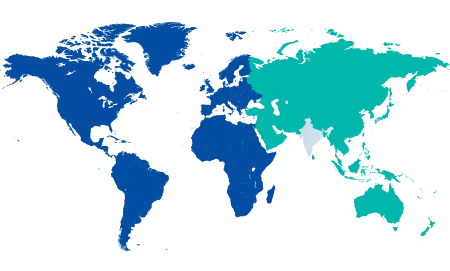-
Book Appointments & Health Checkup Packages
- Access Lab Reports
-
-
Book Appointments & Health Checkup Packages
-
Centre of
Excellence
Centre of Excellence
- Cancer Care/Oncology
- Cardiology
- Cardiothoracic Vascular Surgery
- Diabetes and Endocrinology
- Gastrointestinal Science
- GI Surgery
- Hemato Oncology
- Hematology
- Hepatobiliary Surgery
- ICU and Critical Care
- Medical Gastro
- Medical Oncology
- Nephrology
- Neurology
- Neurosurgery
- Orthopaedics
- Pulmonology (Respiratory and Sleep Medicine)
- Renal Sciences
- Surgical Gastro
- Surgical Oncology
- Urology
- Woman and Child Care Centre
Other Specialities
- Accident and Emergency Care
- Andrology
- Anesthesiology
- Dental Medicine
- Dermatology
- Ear Nose Throat
- General Medicine
- General Surgery
- Internal Medicine
- Kidney Transplant
- Laboratory Medicine
- Laparoscopic Surgery
- Microbiology
- Minimal Access Surgery
- Neonatology & NICU
- Nutrition And Dietetics
- Obstetrics and Gynaecology
- Ophthalmology
- Oral Maxillo Facial Surgery
- Organ Transplant
- Paediatric And Child Care
- Paediatric Cancer Care
- Paediatric Cardiology
- Paediatric Intensive Care Unit
- Paediatric Urology
- Pain Medicine
- Parkinson Disease and Movement Disorder
- Pathology
- Physiotherapy
- Plastic And Cosmetic Surgery
- Radiology
- Rheumatology
- Transfusion Medicine
- Vascular and Endovascular Surgery
- Doctors
- Ranchi
- International Patients



Clinics








- Self Registration
- In-Patient Deposit
- Mars - Ambulance
- Corporate & PSU
- Insurance Helpdesk
- Awards And Achievements
- Careers
- Contact Us

Central line and chemo port use
Central line and chemo port use in Ranchi
A Central Line is a thin, flexible tube inserted into a large vein, typically in the chest or arm, to deliver medications or fluids over a long period. A Chemo Port is a small medical device placed under the skin that connects to a central vein, making chemotherapy and blood draws easier and less painful.
Bhagwan Mahavir Manipal Hospitals offers safe and advanced central line and chemo port use treatment in Ranchi, including expert care and support throughout the process.
Who requires Central Line and Chemo Port devices?
Central line and chemo port use for treatment in Ranchi are typically recommended for patients undergoing cancer treatment, especially when:
-
They require long-term or frequent chemotherapy.
-
Their veins are difficult to access.
-
IV chemotherapy caused pain or swelling.
-
A portable infusion pump is needed for home use.
Types of Central Lines and Chemo Ports Used in Cancer Treatment.
-
Peripheral IV (PIV): A short catheter inserted into the forearm, used for short-term chemotherapy that doesn't irritate veins. It remains in place for up to 4 days.
-
Peripherally Inserted Central Catheter (PICC) Line: A long catheter placed in the upper arm, used for medium-term chemotherapy requiring central venous access. It can remain for weeks to months.
-
Central Venous Catheter (CVC): A Central Line inserted into the chest or neck, used for long-term chemotherapy and frequent infusions. It stays in place for weeks to months.
-
Chemo Port: A small device implanted under the chest skin, used for long-term chemotherapy with minimal maintenance and fewer needle sticks. It can remain in place for months to years.
Getting Ready for the Procedure.
Before the procedure, doctors explain the benefits, risks, and possible complications, such as bleeding, infection, or vein blockage. Patients must share their full medical history, including past surgeries or allergies. The team then selects the safest vein and prepares the area using ultrasound. The team ensures a sterile setup, with a nurse assisting the doctor to minimise infection risks.
What Happens During the Procedure.
The chemo port insertion procedure in Ranchi is typically done by a skilled surgeon or interventional radiologist.
After cleaning the skin and giving local anaesthesia, the doctor inserts a catheter into a large vein in the chest, neck, or arm using ultrasound guidance. A small port is placed under the skin. The team checks blood flow and confirms the correct position using X-ray. The entire procedure is sterile and takes less than one hour.
What to Expect After the Procedure.
After the port is placed, the patient is monitored and usually allowed to go home on the same day. Mild pain or swelling at the site is common and goes away in a few days.
The port stays under the skin and is easy to maintain. Patients can resume most daily activities shortly, depending on their doctor’s advice.
Possible complications or risks of Central Line and Chemo Port Use.
Chemo Port Complications are rare but may include:
-
Arterial puncture.
-
Numbness or tingling near the site.
-
Hematoma (bruising or blood collection under the skin)
-
Pneumothorax (collapsed lung, very rare)
-
Infection (at the site or in the bloodstream)
-
Blood clots.
Central Line Complications can occur:
During the procedure:
-
Irregular heartbeat.
-
Accidental artery puncture.
-
Lung injury.
-
Bleeding or swelling at the site.
-
Air bubbles entering the vein (air embolism)
After the procedure:
-
Infections.
-
Vein narrowing or blockage.
-
Blood clots.
-
Bleeding if the patient has clotting issues.
However, these risks are well managed by experienced specialists offering central line and chemo port use treatment in Ranchi, ensuring safe and effective care for patients.
FAQ's
A chemotherapy port can remain in place for as long as needed, even for several years. Once it’s no longer required, a surgeon can remove it.
No, placing a chemotherapy port is not a significant surgical procedure. Usually, an inch-long incision is needed. Chemo port insertion is usually an outpatient operation, meaning the patient can go back home the same day.
One may experience pressure or a mild pinch when the doctor inserts a needle into the port. However, as compared to cancer therapy via a conventional intravenous (IV) line, having a Chemo Port makes blood draws, infusions, and injections far more bearable.
If there are signs of redness, swelling, fever, or pain around the port site, it’s important to contact a doctor. Infections are treatable, especially when identified early.
Central lines require weekly dressing changes and daily flushing. Chemo ports need less maintenance. They’re flushed after each use and only once a month if not used regularly. Since the port is under the skin, it doesn’t need any dressing changes.
For more information on the chemo port insertion procedure in Ranchi, patients can call the number below or visit the official Manipal Hospitals website.
Website: https://www.manipalhospitals.com/ranchi/
Phone Number: 03369070001
Home Ranchi Specialities Cancer-care Central-line-and-chemo-port-use



You’re on Our Indian Website
Visit the Global site for International patient services










